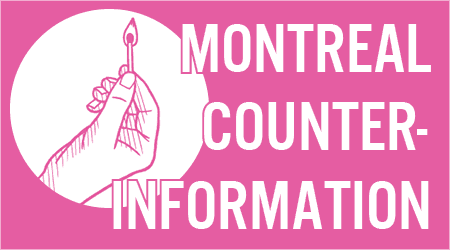From Blockade, Occupy, Strike Back
Instead of hoping for a bureaucratic organization to do something for us, we can take our lives into our own hands by self-organizing. The formation of a crew is a step in this direction. A crew is a collection of close friends that trusts one another enough to organize together. This means having shared intentions, ideas, and practices, having each other’s backs, and never talking to police. In other words, this means sharing affinity. Some people refer to crews as affinity groups. While who is in your crew can be somewhat flexible depending on what you’re trying to do, it does imply having people with whom to consistently participate in social struggles and develop a more long-term term strategy. It often involves sharing your day-to-day life and knowing people well. This means knowing what is shared, but even more importantly, knowing where real political differences exist.
A crew is a small group of people who organize without hierarchy – there are no leaders or followers, and everyone chooses how to take part in the activity. Crews can form anywhere: in school, on the street, and on the job. This is an effective way of organizing because, in a small group, you are making decisions and setting goals with people that you already share affinity with, without needing to vote or use formal processes. Doing so sidesteps the alienation and stagnation that happens as a result of the bureaucratization of the student movement – however, self-organization requires a lot more initiative and creativity, since nobody will put your ideas into action for you. Another benefit is that the decentralization of action planning renders repression of social movements more difficult.
Larger endeavors that are beyond the organizational capacity of a given crew, such as occupations or demonstrations, may require assemblies or other means to coordinate with others. This larger coordination structure based on autonomy stands in contrast to the standard idea of general assemblies, which require voting or consensus, whose ultimate function is to control and limit the struggle.
As people realize their own power as individuals and communities, the power of those in authority (i.e. the administration, the politicians, the police, and the bosses) weakens. This is what happens in any community garden, any occupation, and any riot. Individuals see that they can grow their own food and help others do the same; they see what they can do with just a few others. They see that they can take and hold space, and make entirely new ways of interacting together possible, while fighting off the institutions that stand in their way. When space is liberated, when we fight authority, we see that capitalism is not absolute. We realize that most of the things around us that we value are of our own creation. Contrary to the widespread myths, authority is in fact unnecessary and harmful.
When more people realize their actual capacity to determine their own lives, they, along with others, become a material force. One of a physical nature, unlike the voting polls that only act as a means to confuse where our true power lies – in our own hands. Those who wish to play puppet master know this. The people who fancy themselves our rulers and keepers – politicians, bosses, police, judges, and many others – long ago organized themselves into a force that can in actuality change things, move things, and control things. Crews act as a counterforce to those whose goal is to profit by dominating us.
Crews, then, serve a role in protecting ourselves from those who would like to exploit us for the sake of the economy, from those who would like us to continue working for scraps and piling up huge debts. Crews can come to demonstrations prepared and with clearly formulated ideas and plans about what they want to see happen, opening up interesting possibilities in otherwise ritualized processions from point A to point B. Crews can organize to disrupt the functioning of the economy, both on campus and off, through blockades, sabotage, occupations, and other forms of action. Crews can get together and articulate their ideas on the walls of the campuses and city streets with graffiti and posters. They can make sure that advertisements never stay up for long, and that police stations, banks, and gentrifying apartments or restaurants are never safe. Crews can steal from big businesses, such as by expropriating groceries to pass out for free in their neighbourhoods. They can take money from capitalism and give it to social projects autonomous from the state, or initiate those projects themselves. Crews form to act as a force against those who would rather see us subservient or behind bars.
Crews can form to approach the police when they are hassling someone on the street or in the métro. They can attack the immigration machine that deports and imprisons. They can stop the landlord trying to evict their neighbours. They can de-arrest someone at a demonstration without hesitation, even if they don’t know them. They can smash banks and other spaces which exist to reproduce capitalism. They can build up their communities through solidarity, so that the police hesitate before following someone into a neighbourhood or a campus.
On campus, crews can extend the reach of the strike. Open up the universities as social spaces for students and non-students alike to come in and use freely. Appropriate the copy machines and spread news of the revolt to other sectors of society. Take over the cafeterias and bars and begin preparing the communal feast. Burn the debt records. In short, create not an ‘alternative’ that can easily be accommodated within capitalist society, but rather liberated space in which power is built to destroy capitalist society.
The point of acting is to gain control over our lives and to further our own power, as well as the power of those who have always been dispossessed in this society.
Crews strike back.


